AI in Garden Design: Optimizing Multi-Use Spaces
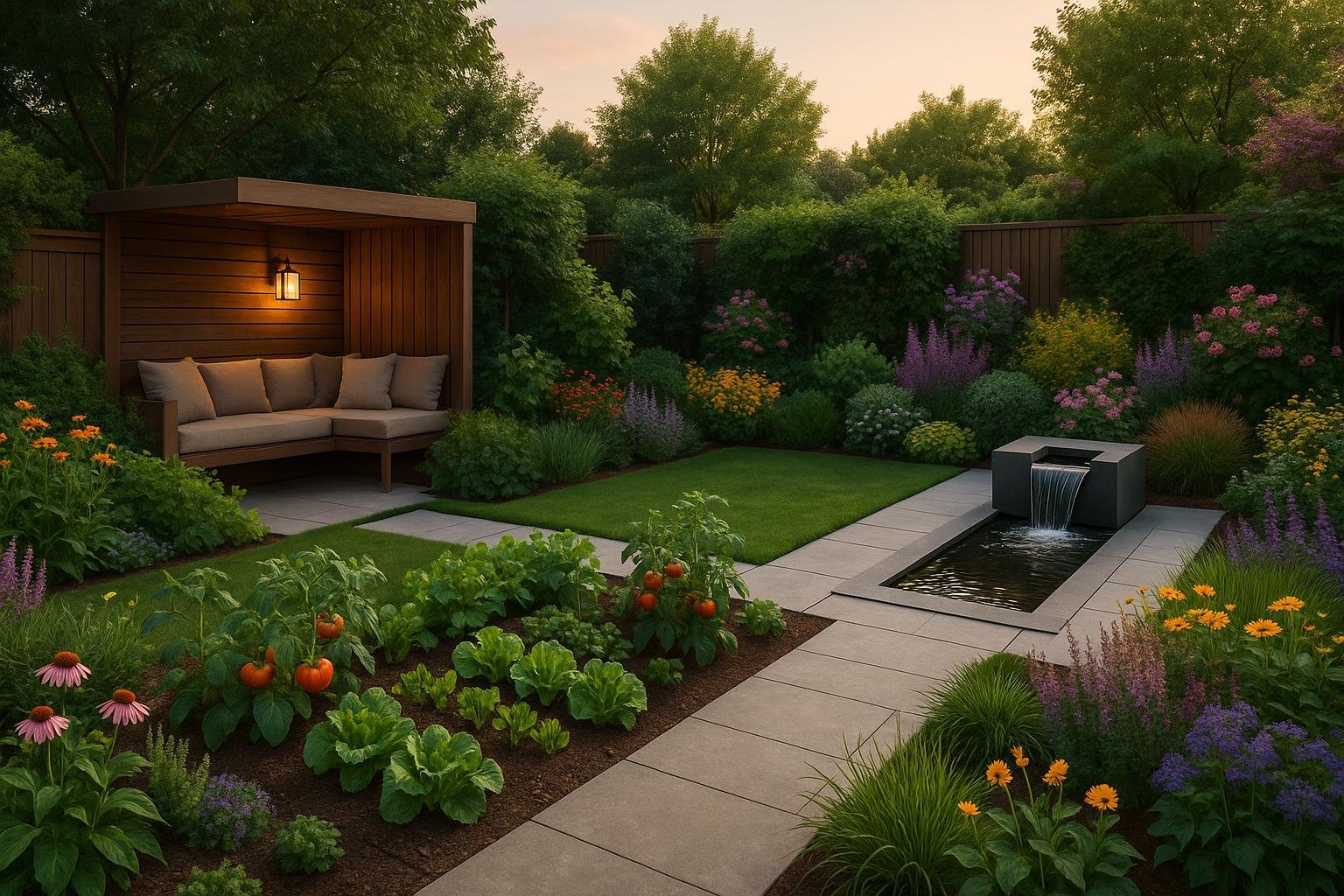
Outdoor spaces are evolving. With smaller living areas and urbanization on the rise, gardens now serve multiple roles - relaxation, socializing, and food production. But designing these spaces is challenging: limited space, competing needs, and seasonal changes often create conflicts.
AI is changing the game by simplifying multi-use garden design. Tools like AIGardenPlanner analyze your yard, climate, and lifestyle to create efficient layouts, recommend plants suited to specific conditions, and visualize designs in 3D. These solutions save time, reduce costs, and make it easier to maintain functional outdoor spaces year-round. Whether you’re working with a small backyard or a rooftop garden, AI ensures every inch serves a purpose.
AI Garden Design Secrets Transform Your Outdoor Space with Smart Tech

Main Problems in Multi-Use Garden Design
Creating a garden that serves multiple purposes isn’t as simple as planting a few flowers and calling it a day. Homeowners often find themselves juggling competing needs, leading to compromises that can leave everyone a little dissatisfied.
Meeting Different User Requirements
One of the biggest challenges in designing a multifunctional garden is making sure it works for everyone in the household. Adults may want a peaceful spot for their morning coffee, but that same space might not be ideal for kids to play or for pets to roam around freely[4]. It’s a balancing act that’s easier said than done.
Accessibility is another major factor. For instance, about 33% of Mississippians aged 18 and older - roughly 767,000 people - live with a disability[5]. Yet, many garden designs prioritize aesthetics over accessibility, leaving those with physical limitations struggling to enjoy the space. Finding a way to blend beauty with functionality is tough, especially when space is limited.
And speaking of aesthetics, it’s often hard to strike the right balance between form and function. A stunning flower bed, for example, might not hold up well under daily use, while purely practical designs can feel uninspired. When space is tight, meeting everyone’s needs becomes even more complicated.
Working with Limited Space
Limited outdoor space is another big hurdle, especially in urban and suburban areas where backyards are shrinking. Yet, expectations for these spaces continue to grow[1]. Homeowners want their yards to do it all - dining, playing, gardening - but fitting all these functions into a small area can feel like solving a puzzle.
Take a typical urban backyard, maybe 20×30 feet. That space might need to double as a dining area, a play zone, and a garden. Each purpose requires its own setup, and overlap isn’t always possible. On top of that, urban development often reduces vegetation and biodiversity, forcing homeowners to make tough choices. Do you prioritize a vegetable garden over a social space? Or opt for low-maintenance landscaping instead of a variety of plants?
The shape and orientation of the yard can add even more complexity. Narrow side yards, odd corner lots, or sloped areas often don’t fit neatly into standard garden layouts. These irregular spaces demand creative solutions, which can make the design process even more challenging.
Handling Seasonal Changes
Gardens aren’t static - they change with the seasons, and that variability can make designing a year-round space tricky[3]. A garden that looks and functions beautifully in spring might become unusable in the scorching summer heat or during the chill of winter.
Seasonal shifts bring their own set of challenges. For example, summer might call for shade structures to keep areas cool, while winter might require frost protection. Dining spaces and play areas also need adjustments to stay comfortable and safe throughout the year.
Each season brings its own demands: planting in spring, managing heat in summer, preparing soil in fall, and protecting plants from frost in winter[7]. Pests and diseases also vary with the seasons, requiring different strategies to keep them at bay[6]. All these factors make it hard to maintain a garden that works well year-round.
Managing Upkeep Across Different Areas
Maintenance is where many multi-use gardens can become overwhelming. When a garden has zones designed for different purposes - like a veggie patch, a lawn, and a wildflower area - it often means juggling conflicting care routines[3]. For example, vegetable beds might need daily watering, while wildflower meadows thrive with minimal attention. Meanwhile, a neatly manicured lawn demands regular mowing. The result? A care schedule that can feel impossible to manage.
For some homeowners, the upkeep becomes a source of stress rather than relaxation[2]. Spring planting overlaps with summer watering, fall harvesting, and year-round tasks like lawn care and cleaning pathways. Add in the maintenance of different materials - like staining wooden decks, clearing weeds from stone paths, or cleaning water features - and it’s easy to see how things can spiral out of control.
Without the time, energy, or expertise to handle it all, certain areas may end up neglected, which can take away from the overall enjoyment of the garden. Instead of being a retreat, the garden risks becoming yet another item on the to-do list[1].
How AI Solves Multi-Use Garden Design Problems
AI is revolutionizing garden design by tackling the complexities of creating spaces that serve multiple purposes. Instead of relying on guesswork, AI-powered tools analyze your yard, climate, and lifestyle to deliver tailored solutions. Let’s break down how AI handles space planning, plant selection, and design visualization.
Smart Space Planning and Zone Layout
AI excels at optimizing your yard’s layout by analyzing dimensions, terrain, and spatial relationships. Using data from millions of design examples, AI tools achieve up to 95% accuracy in creating efficient layouts [8]. These tools consider factors like slopes, existing structures, and sun exposure to recommend the best placement for various zones.
For instance, if you have a 20×30-foot backyard that needs to accommodate dining, play, and gardening areas, AI can determine the ideal arrangement. It ensures the vegetable garden is far enough from active play areas and places dining spaces where they can enjoy evening shade. This smart planning helps maximize functionality while maintaining a harmonious flow.
Custom Plant and Material Suggestions
Choosing the right plants can be overwhelming, but AI simplifies this process by analyzing climate data, soil conditions, and your maintenance preferences. Instead of random trial-and-error, AI delivers precise plant recommendations tailored to each part of your garden [10] [11]. Whether it’s a shaded seating area or a sunny vegetable patch, the tool ensures that the plants it suggests will thrive in those specific conditions.
AI also promotes sustainability by recommending water-efficient plants and region-appropriate greenery [9]. This is especially helpful for multi-use gardens, where different zones may require unique solutions to thrive under varying conditions.
Creating Visual Design Options
AI doesn’t just plan - it brings your garden to life visually. Using advanced visualization tools, you can explore multiple design options before making any physical changes. These tools create realistic 3D renderings and simulate lighting conditions throughout the day and across seasons [8]. Want to know how your seating area will look in winter mornings or summer evenings? AI can show you.
This feature allows you to experiment with different styles, whether you’re leaning toward a traditional cottage garden or a sleek, modern look. You can tweak layouts, move seating areas, or swap plants in real time, refining your design without the hassle or cost of trial-and-error adjustments.
AIGardenPlanner: A Practical AI Solution
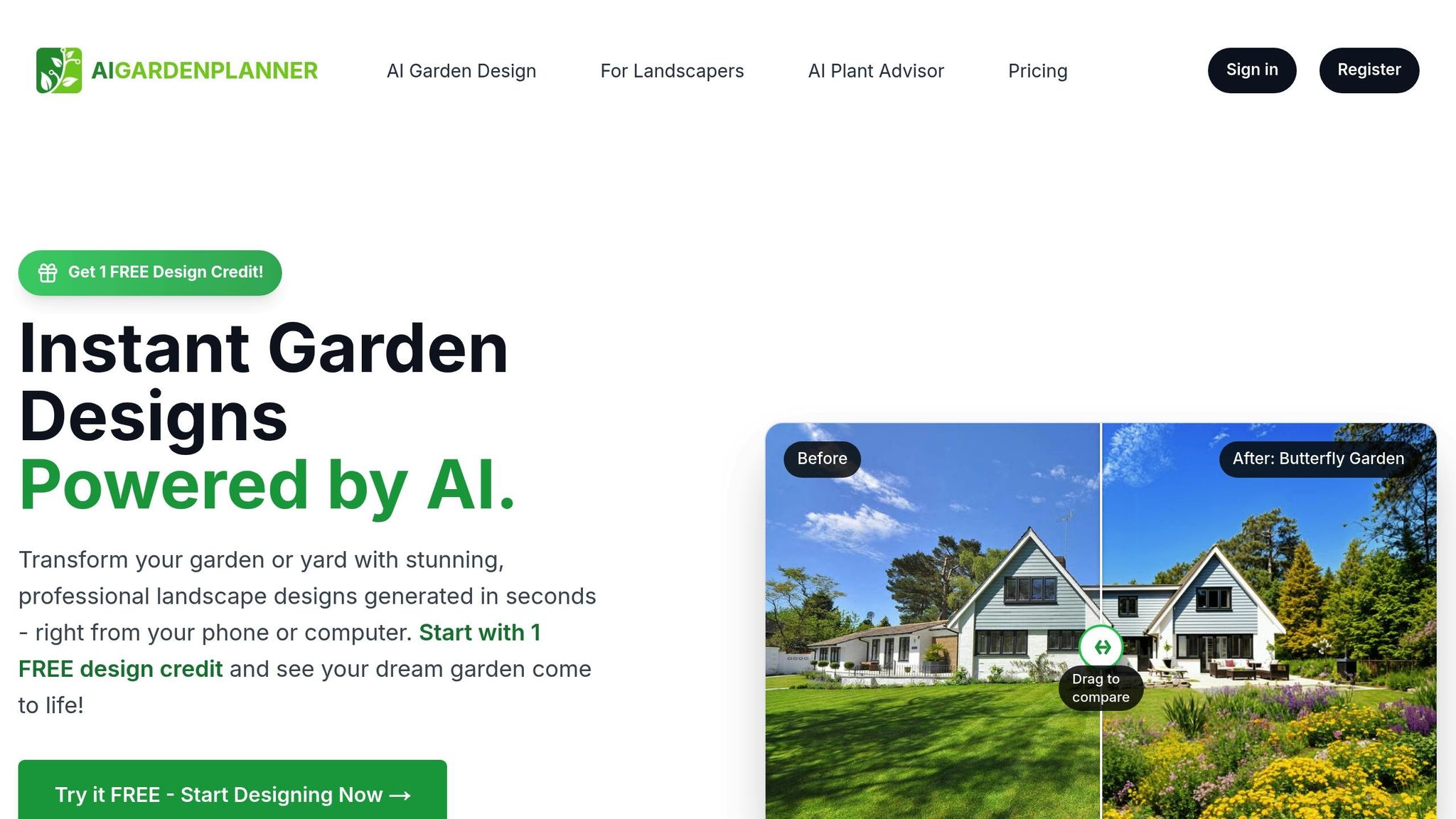
AIGardenPlanner is a standout example of how AI can simplify multi-use garden design. This platform allows users to upload photos of their gardens and choose from over 50 garden styles to explore tailored design options. Its AI Plant Advisor offers personalized plant recommendations based on your location, climate, and preferences, ensuring that every suggestion aligns with your garden’s unique conditions.
For those on a budget, AIGardenPlanner offers flexible pricing. Occasional users can opt for a Pay As You Go plan at $15, while more active users can choose the Starter plan for $19 monthly (or $9 per month when billed annually). With no prior design experience needed, this tool makes professional-quality garden planning accessible to anyone looking to create a functional, personalized outdoor space.
AI’s ability to deliver custom solutions makes it the perfect partner for designing multi-use gardens. Instead of settling for generic ideas, it provides designs that reflect your specific needs, preferences, and challenges.
sbb-itb-4d6a8dd
🚀 Ready to Reinvent Your Garden?
Join thousands of homeowners who have transformed their gardens using our AI design tool. Upload one photo to explore endless possibilities.
Get your AI garden designs →AI Methods for Flexible Multi-Use Spaces
Designing gardens that can evolve with changing needs requires a flexible approach, and AI makes this process much easier. By offering recommendations on layouts, plant choices, and movable features, AI helps create outdoor spaces that remain functional and inviting throughout the year. Let’s explore how AI enhances garden layouts, plant planning, and adaptable features to craft versatile spaces.
Creating Modular Garden Layouts
AI is great at optimizing garden layouts that can serve multiple purposes over time. Imagine a summer dining area that transitions into a cozy winter gathering spot - AI ensures every square foot of your garden is put to good use. It identifies how zones within your garden can shift roles based on the season or your changing needs.
Planning Plants for Year-Round Use
AI takes plant selection to the next level by analyzing your local climate, soil conditions, and personal preferences. It suggests plants that keep your garden visually appealing and functional all year long. Instead of relying on single-season plants, AI designs layered planting schemes. For example, early-spring bulbs can be followed by summer vegetables, which then make way for fall perennials and winter evergreens.
For edible gardens, AI is especially handy. It recommends crop rotations based on local growing conditions, pairing cool-season vegetables like lettuce and peas with warm-season favorites like tomatoes and peppers. This ensures your garden stays productive and vibrant no matter the season[13].
Using Movable Garden Features
Movable features are key to making a garden adaptable, and AI excels at suggesting solutions that fit your lifestyle. For instance, large planters on wheels can be shifted from sunny spots in the summer to sheltered areas in the winter. AI also recommends modular furniture that can be rearranged to suit different activities, like relaxing, dining, or hosting guests. Additionally, it offers tips on seasonal storage to keep these movable elements protected and ready for use when needed[12].
Real Examples and Success Stories
Examples from the real world highlight how AI is transforming outdoor spaces into functional and inviting areas. These stories show how AI adapts designs to suit different environments and needs.
Family Backyard Design
Take the case of a family using AIGardenPlanner to revamp their backyard. With the tool's help, they divided the space into distinct zones: one for kids to play and another for adults to unwind in peace. The AI provided layout ideas that combined practicality with visual appeal, creating a backyard that worked for everyone[14].
Urban Rooftop Gardens
Urban areas are also reaping the benefits of AI-guided design. Rooftop gardens in cities now rely on AI and IoT technologies to track environmental factors like sunlight exposure. This data helps create layouts that not only support lush greenery but also carve out comfortable social spaces. As Green City Times puts it:
"AI is your trusty partner in cultivating urban life." - Green City Times [15]
The trend is catching on. In the United States, demand for green roofing systems is projected to grow by 5.1% annually, potentially hitting $207 million by 2025[16].
Community Spaces and Shared Gardens
Community gardens have also been transformed by AI. These tools help planners balance the needs of diverse users by analyzing environmental conditions and suggesting layouts that combine productive gardening areas with inviting social spaces. AI doesn't stop at planning - it continues to offer advice on plant selections, layout adjustments, and maintenance, ensuring these spaces evolve with the community's needs[17][18].
Conclusion: AI's Impact on Future Garden Design
AI is transforming how we approach garden design, making it more accessible, efficient, and personalized. By harnessing advanced data, AI achieves an impressive level of design accuracy while slashing costs by 80–90% compared to traditional professional services[8]. This makes professional-quality designs attainable for a much broader audience.
On top of that, AI speeds up the design process. Through machine learning and data analysis, it generates a variety of design options that would typically require extensive time and effort to create manually[20]. Take AIGardenPlanner, for example - it offers users an intuitive platform to access professional-grade design tools with ease[12]. These advancements not only simplify garden planning but also open the door to more sustainable design practices.
Speaking of sustainability, AI plays a crucial role in promoting eco-friendly solutions. For instance, AI-powered irrigation systems can cut water usage by up to 25%[21], and other AI tools help optimize resources like water, fertilizers, and energy[19]. These features align perfectly with the increasing focus on environmentally conscious living among homeowners.
Looking ahead, AI's role in garden design is poised to grow even further. As the technology becomes more intuitive and integrated, it will support emerging trends such as climate-resilient landscaping, multi-functional outdoor spaces, and smarter irrigation systems.
Landscape architecture expert Noelle Russell puts it well:
"AI isn't a job killer; it's a task killer."[22]
This shift allows designers to focus on creative problem-solving while letting AI handle routine, time-consuming tasks.
The integration of AI into garden design is more than just a tech upgrade - it’s leveling the playing field for access to professional designs, encouraging sustainable practices, and enhancing overall user satisfaction. By addressing a wide range of challenges, AI is reshaping what’s possible in landscaping.
FAQs
How can AI help design small urban gardens that serve multiple purposes?
AI has the potential to transform how small urban gardens are designed by evaluating key factors such as space limitations, soil conditions, and local climate. This allows for layouts that make the most out of every square foot - whether you’re looking to grow plants, create a peaceful retreat, or include areas for recreation.
On top of that, AI-powered tools can offer customized plant suggestions based on your region’s climate and your personal preferences, helping your garden flourish while aligning with your vision. By automating tasks like managing water usage, distributing nutrients, and optimizing sunlight exposure, AI simplifies the process of balancing beauty, productivity, and efficiency in tight urban spaces.
How can AI help make gardens more accessible for people with disabilities?
AI has the potential to make gardens more inclusive by providing personalized design recommendations tailored to mobility and sensory needs. For instance, AI can suggest practical features like barrier-free pathways, ramps, or raised garden beds, making outdoor spaces more manageable for individuals with limited mobility.
On top of that, AI tools can create virtual previews of garden designs, allowing users to see how these accessibility features will fit and function within their space. This ensures that gardens are not just visually appealing but also thoughtfully designed to be welcoming and easy to navigate for all.
How can AI help design gardens that adapt to seasonal changes and stay functional year-round?
AI-powered tools, such as AIGardenPlanner, simplify the process of designing gardens that flourish throughout the year. These tools take into account your location, climate, and personal preferences to recommend plants that offer beauty and practicality across all seasons.
Beyond plant suggestions, they include step-by-step growing guides and seasonal care tips. Whether it's planting, pruning, or safeguarding plants from harsh weather, these insights ensure you're prepared for every transition. The result? A garden that stays lively and functional no matter the season.
🎨 Visualize Your Dream Garden Today!
Transform any outdoor space into a professional landscape design in minutes. Just upload a photo, choose your style, and let our AI do the rest.
Start your garden transformation now →Related posts
Related Articles
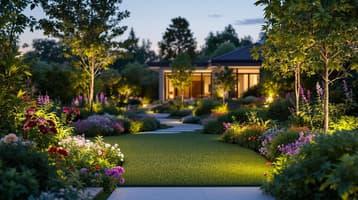
Ultimate Guide to Smart Garden Lighting Setup
Learn how to enhance your outdoor space with smart garden lighting through effective planning, installation, and automation techniques.
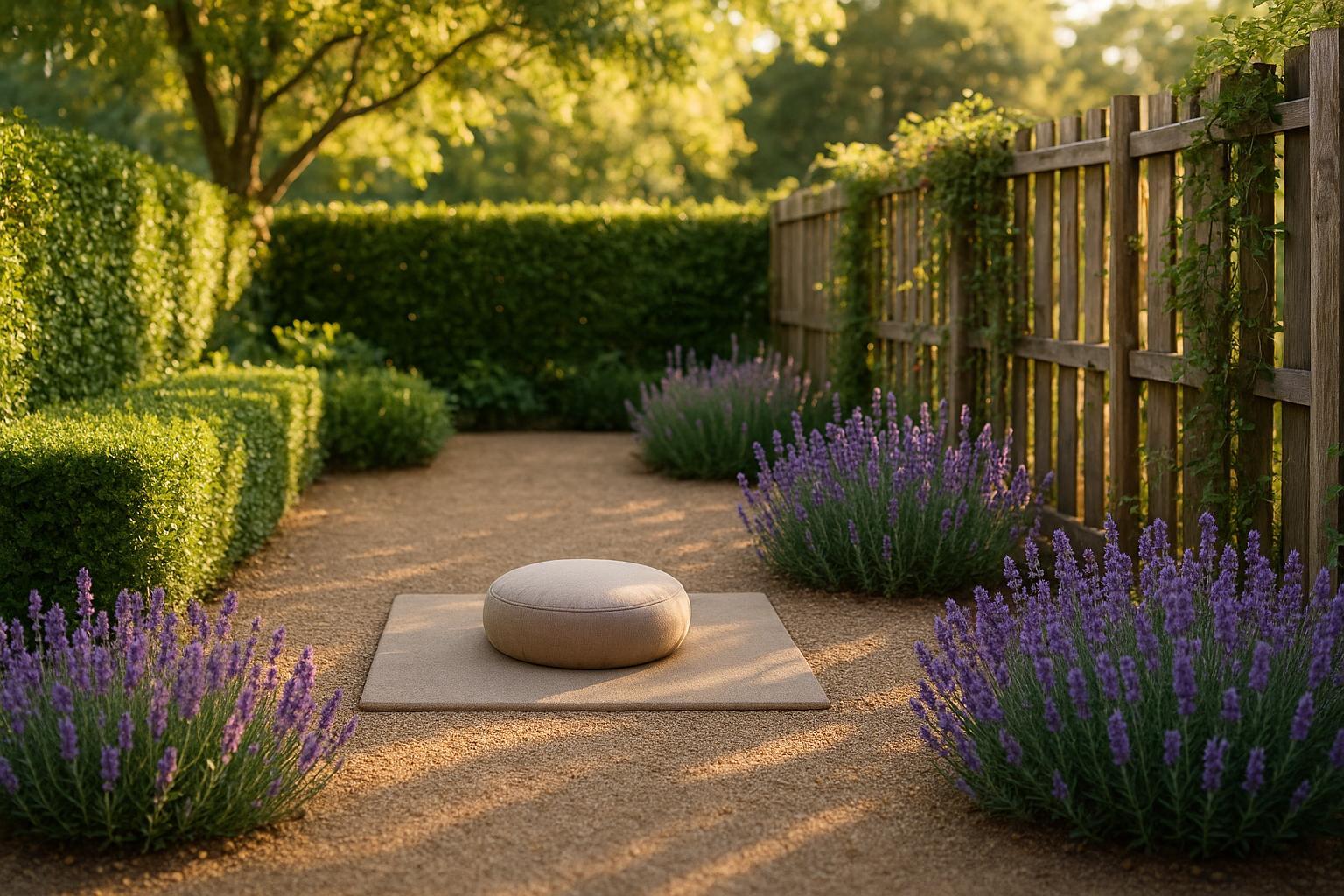
Ultimate Guide to Meditation Garden Boundaries
Explore how to create serene meditation garden boundaries with living and built elements for privacy, tranquility, and natural beauty.
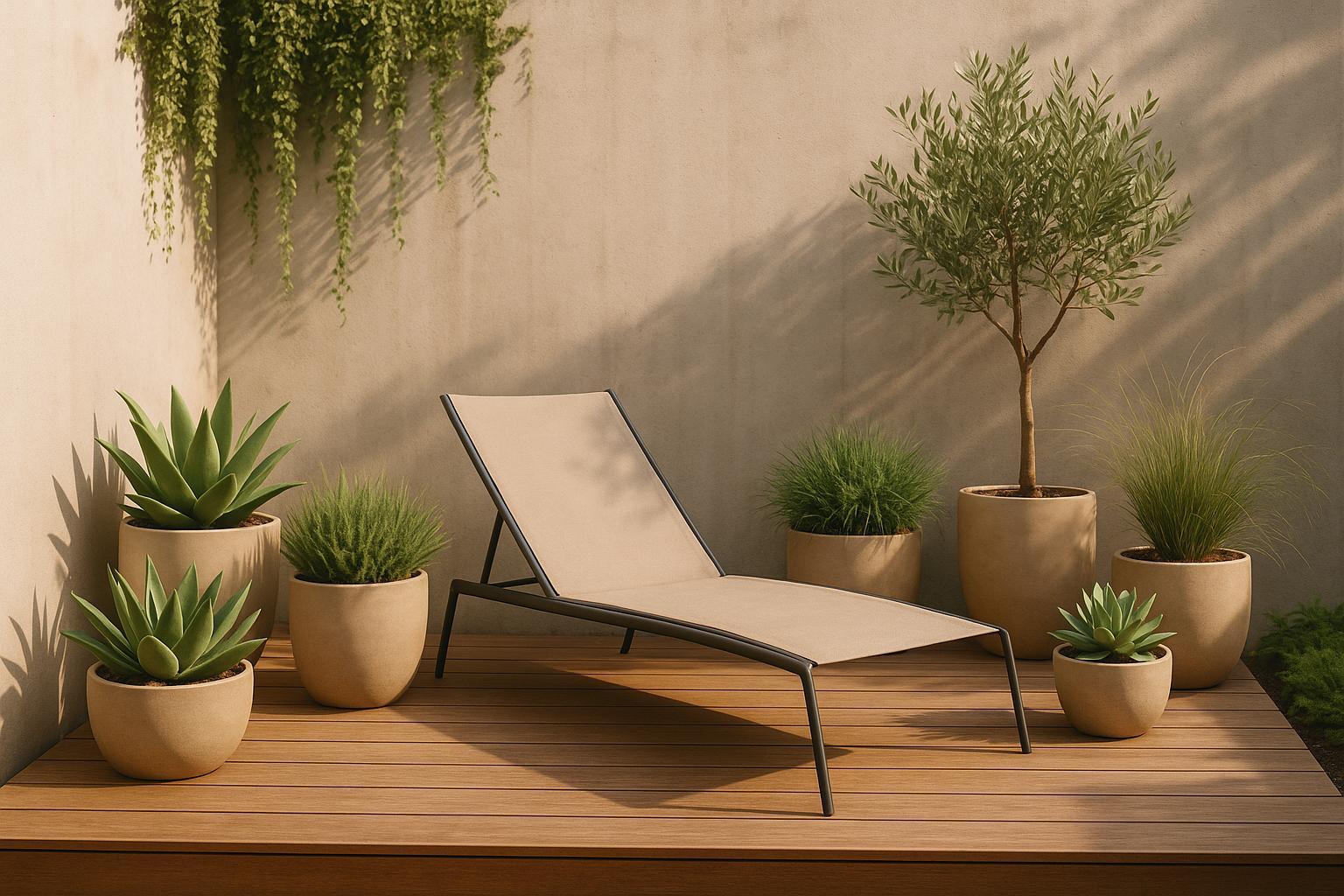
10 Minimalist Garden Ideas for Small Urban Spaces
Transform small urban spaces into tranquil retreats with minimalist garden ideas that emphasize simplicity and smart design choices.

AI Tools for Designing Seasonal Garden Features
Explore how AI tools streamline seasonal garden design with personalized plans, plant suggestions, and visualizations for year-round beauty.

How AI Matches Colors and Textures in Gardens
Explore how AI simplifies garden design by matching colors and textures, creating personalized layouts for thriving outdoor spaces.

AI Tips for Sun and Shade Plant Pairing
Transform your garden with AI tools that simplify sun and shade plant pairing for a thriving mixed-light garden.